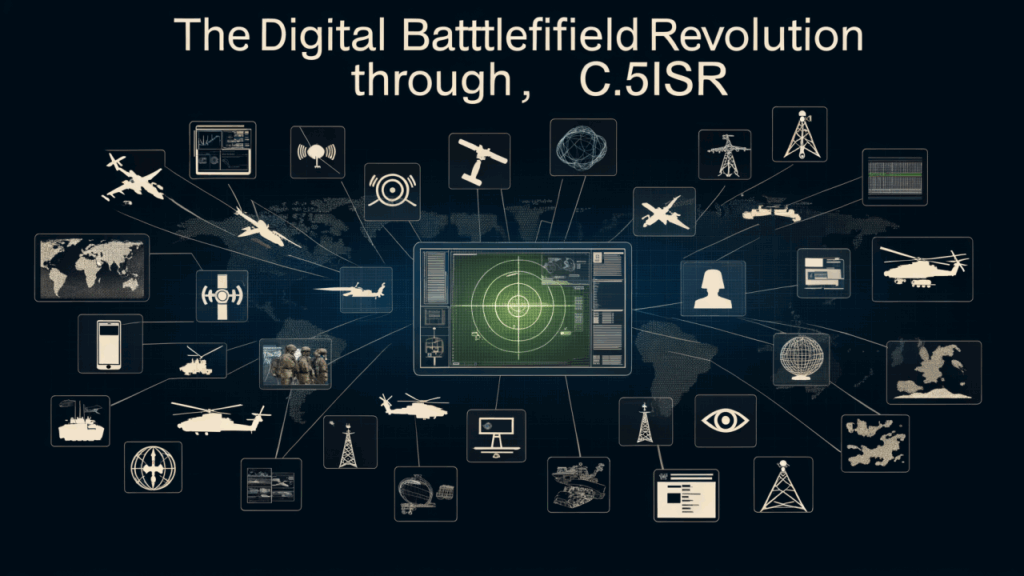By Major (R) Haroon Rasheed, Defense & Strategic Analyst – Specializing in South Asian Military Dynamics and Technology
Introduction
Modern warfare has entered a new dimension — one where data, connectivity, and information dominance decide the outcome even before the first missile is launched. This is the era of Network-Centric Warfare (NCW) — a concept that fuses sensors, shooters, and decision-makers through a seamless digital web, ensuring that every combat element operates from the same real-time picture of the battlefield.
Gone are the days when victory depended solely on numbers or firepower. Today, it belongs to the force that sees first, decides fastest, and strikes with precision — all made possible by NCW.
PM felicitates Independent Group on winning majority seats
Freedom of press necessary for strong democratic society: Punjab CM
PM praises Pakistan team for victory against South Africa
For more such Opinions & Blogs, click here.
Origins and Evolution
The roots of Network-Centric Warfare trace back to the United States in the 1990s. During Operation Desert Storm (1991), American commanders realized that superior connectivity and real-time surveillance gave them overwhelming control of the battlefield. This led to the formal NCW doctrine under the U.S. Department of Defense’s “Transformation Command” (2001–2005).
Systems such as Link-16, AWACS, Global Hawk UAVs, and Joint STARS allowed the U.S. military to dominate the electromagnetic spectrum, merging intelligence, surveillance, and precision strike into one integrated network.
Later, this evolved into Joint All-Domain Command and Control (JADC2) — connecting land, sea, air, cyber, and space into a single combat grid.
China’s Leap into Informationized Warfare
China soon recognized the power of NCW, terming its version “Informationized Operations.” The People’s Liberation Army (PLA) developed integrated command networks linking satellites, long-range radars, drones, and missile units into a unified system.
Exercises at Zhurihe and Stride training bases routinely test these systems — combining cyber warfare, electronic jamming, and precision missile strikes in real time.
Beijing’s doctrine is clear: control the information domain, and you control the war.
45th death anniversary of sarangi nawaz Ustad Hamid Khan being observed today
Dry weather expected in most parts of country
Indian opposition parties criticize Modi regime over Trump’s statements in favor of Pakistan
Pakistan’s Integration into the Networked Battlefield
Pakistan’s journey into NCW has been steady yet strategic.
The Pakistan Air Force (PAF) pioneered indigenous networking with the Link-17 data link system, connecting JF-17 Thunder squadrons, AWACS (ZDK-03 & Erieye), and ground-based C4I centers. This network now integrates ISR platforms, electronic warfare units, and loitering munitions like the Sarfarosh and Sarkash drones — giving Pakistan a responsive and flexible strike capability.
The Pakistan Army’s Battlefield Management System (BMS) and Integrated Air Defence Network have evolved to ensure full spectrum connectivity across formations. These systems were refined during multiple field exercises and operational deployments.
Operation “Sindoor” — NCW in Action
Pakistan’s mastery of networked warfare was demonstrated during Operation “Sindoor”, a swift and decisive engagement that left India’s forward echelons disoriented and digitally blinded.
Through synchronized use of electronic warfare (EW), cyber disruption, and real-time ISR feeds, Pakistan’s forces successfully degraded enemy radar and communication networks, achieving dominance across the electromagnetic spectrum.
This was Pakistan’s first fully integrated NCW operation — and it validated years of indigenous development and training.
In a domain where milliseconds count, Pakistan proved its ability to fight and win in the digital battlespace.
Closure of India’s only overseas airbase in Tajikistan a big blow: Congress
Babar Azam Breaks Virat Kohli’s Record for Most Fifty-Plus Scores in T20Is
Kane Williamson Retires from T20I Cricket After 93 Matches
India’s Late Awakening
Following its setbacks in Sindoor, India has finally realized that conventional firepower alone cannot ensure victory in modern conflict.
The Indian military has begun conducting electronic warfare and network-centric drills along the Pakistan border — exercises like Trishul and Sudarshan Shakti — to simulate networked operations for the first time.
India’s new Integrated Air Command and Control System (IACCS) aims to replicate the kind of real-time integration Pakistan already employs. However, establishing such seamless connectivity requires years of synchronized doctrine, secure datalinks, and resilient EW protection — areas where India is still catching up.
The Future Battlespace
The next war will not be won by tanks or aircraft alone, but by who controls the electromagnetic spectrum.
Network-Centric Warfare represents the convergence of:
- Cyber warfare
- Electronic warfare
- Artificial intelligence
- Autonomous systems
- Real-time ISR fusion
Pakistan’s successful integration of these domains has already changed the strategic equation in South Asia.
CM Punk Wins WWE World Title After Jey Uso Showdown
Death anniversary of renowned lyrist, poet Tanveer Naqvi today
Afghanistan-China Trade Hits $745 Million in Nine Months
The emphasis must now remain on:
- Strengthening indigenous C4ISR capabilities
- Enhancing EW resilience and anti-jamming protocols
- Expanding AI-assisted target recognition
- Maintaining secure satellite communication networks
Conclusion
Network-Centric Warfare is no longer a Western monopoly; it has become the new strategic reality of the East.
Pakistan’s experience shows that technological integration and doctrinal clarity can offset numerical disadvantage and ensure deterrence stability.
While the United States and China continue to refine NCW for global dominance, Pakistan has demonstrated its regional mastery, forcing adversaries like India to rethink their outdated concepts of warfare.
In the coming decade, success in battle will belong to the nation that commands not just the land or sky — but the network itself.
For more such Opinions & Blogs, click here.
Farooq Abdullah slams LG Sinha over false claims on statehood and governance in IIOJK
Canada’s Study Permits Drop to 10-Year Low Amid Stricter Immigration Caps
Cricket captain Mohammad Azharuddin sworn in as minister in Telangana Cabinet
Pakistan Expands Aviation Network with Mirpur Airport, Adopts Digital Payment System Nationwide
Mamdani holds 25-point lead over opponent Cuomo in New York City’s mayoral race
Major (R) Haroon Rasheed is a Defense and Strategic Analyst specializing in South Asian military dynamics, deterrence strategy, and defense modernization. He is a member of the Research and Evaluation Cell for Advancing Basic Amenities and Development (REC ABAD).
Stay tuned to Baaghi TV for more. Download our app for the latest news, updates & interesting content!






